You will find numerous websites telling you what the “best” outdoor security cameras are. You will see the usual consumer brands like Arlo and Ring. However, these are on the lower end of quality and reliability. The “best” camera depends on the price point and how you will use it.
by Bryce Whitty
Bryce is a registered Security Advisor who started ProtectFind to help people get the right security system for their goals.
People who buy outdoor security cameras fall into three categories:
Consumer, Prosumer and Professional.
- Consumers are people who want something cheap and installed quickly to see who is coming and going. Arlo and Ring often serve these.
- Pro-sumers (a more professional consumer) have seen shortcomings in consumer brands’ quality and reliability or small businesses. Dahua, Hikvision and UNV often serve these.
- Professional are businesses where camera quality and reliability of the cameras are of utmost importance. Price is secondary. These often turn to Bosch and Axis cameras.
Related Reading:
What security camera brands fall into what categories.
If you are renting and cannot install wired cameras, then Arlo and Ring cameras might be a solution, but you need to understand their limitations.
Wireless cameras are prone to wireless interference making their signal unreliable. They are prone to various technical problems and need to be charged and easily disabled by anyone tech-savvy.
While many people see Arlo and Ring camera kits as a cheap solution, the initial purchase price reaches the cost of much higher quality “Prosumer” models.
Arlo and Ring cameras get even more expensive as time goes on because they have subscriptions.
If you had 2-5 Arlo cameras for five years, you would have paid $899 in subscription fees on top of the initial purchase price.
The Ring cameras are a little cheaper. If you had 5 Ring cameras for five years, you would have paid $500 in subscription fees.
The “Arlo Pro 3 Wire-Free 2K Security camera system” comes with four cameras and currently retails at $1,298. If you own the system for five years, the total cost would be $2,197.
You could get a great Pro-sumer camera kit (like Dahua or Hikvision) wired up and installed by a professional for that price with no ongoing costs.
It is recommended to get a professionally installed kit. Do it once, do it right.
The best outdoor security cameras depend on your goals.
One size does not fit all. What are you trying to achieve?
1
Outdoor Home Security Cameras
If you are trying to get a general overview of your suburban home’s outside, then a Dahua, Hikvision or UNV kit with six turret cameras and an NVR might be the right solution.
In most outdoor home security camera kits (including the lesser Arlos and Rings), the cameras have a wide Field-of-View of about 110°. They can cover a larger area, so you need or fewer cameras. However, the downside is that a person has to be within 9 metres for identification.
Below is an example of a wide field-of-view setup you can expect with most home outdoor security camera kits:
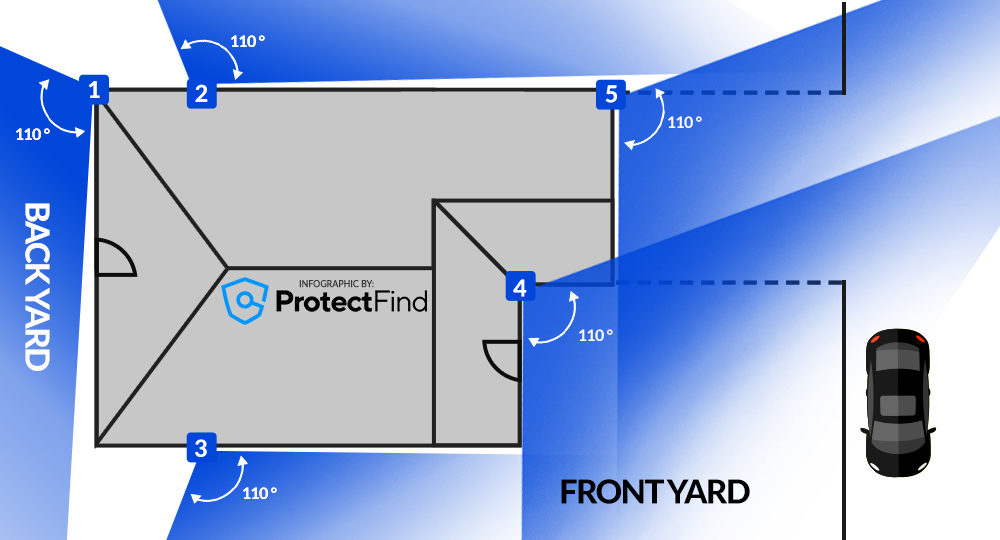
If you want to watch your car parked on the street across the lawn, 9 metres for identification is not enough range. It will show someone breaking into your car but won’t be close enough to determine who did it.
You will want a different camera for that specific task that can optically zoom in on the car at the cost of a smaller field-of-view.
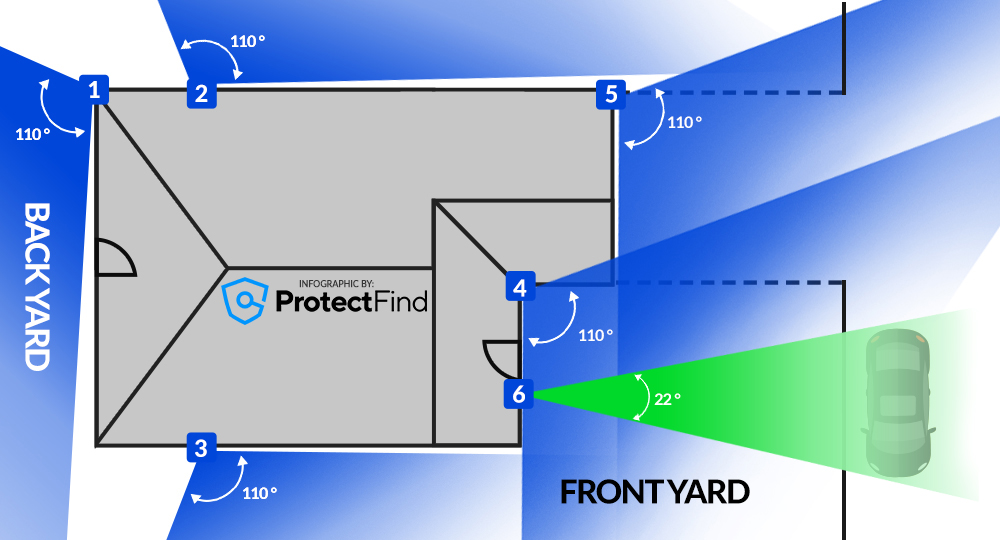
2
Outdoor Business Security Cameras
The size and shape of businesses can vary greatly. It could be a small crack-in-the-wall cafe or a large self-storage unit business with multiple buildings.
The small cafe may only need one outdoor surveillance camera, whereas the storage unit business may need a combination of outdoor CCTV cameras with different lenses.
The best outdoor business security cameras are the ones that are specifically chosen for the position they are in. Many good security installers can design a system specifically for your business.
Dahua, Hikvision and UNV are common choices for small businesses on a budget. Larger businesses or businesses where the security footage is critical (banks, petrol stations etc.), should look at Bosch or Axis.
Below is an example layout for a self-storage unit business. It makes use of 12 outdoor business security cameras, with different fields of view appropriate for the location.
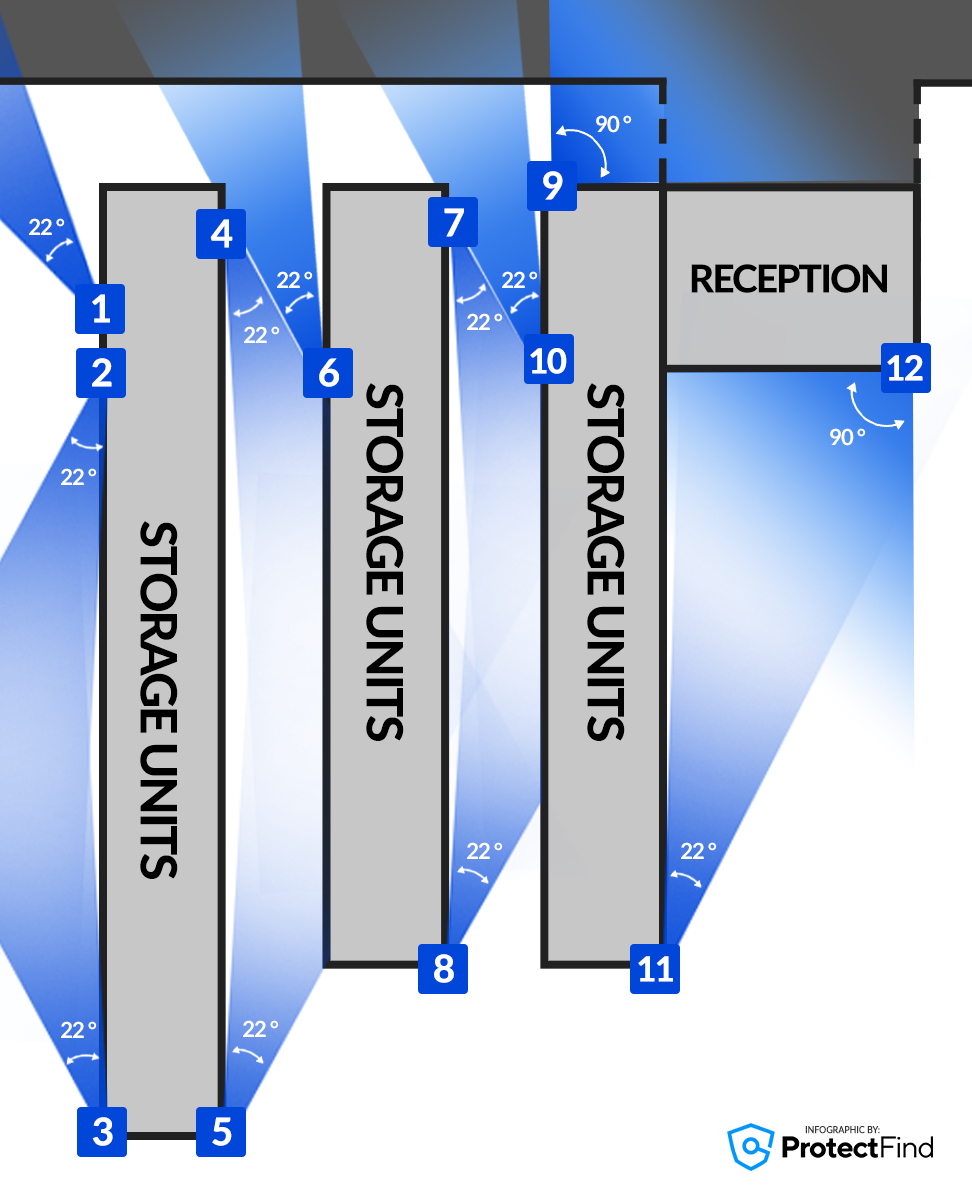
3
Wireless Outdoor Security Cameras
When referring to wireless outdoor security cameras, the “wireless” part doesn’t specify how the camera is powered, just that it uses Wi-fi to connect to your network.
There are three main ways a wireless outdoor security camera gets power: a power cable, a battery that needs to be recharged, or solar and battery.
You can find a variety of wireless outdoor security cameras in most major electronic stores. However, I find that wireless-battery cameras are prone to problems that might be a showstopper for you.
4
Outdoor Security Cameras with Night Vision
Most outdoor security cameras have night vision of some sort. However, how well they see at night can vary greatly from camera to camera.
One of the most important aspects of good outdoor night vision is the camera’s sensor. It is a complex topic but generally, the larger sensor the camera has, the more light it collects and t better it sees at night.
When you are looking for outdoor security cameras with night vision, you will see manufacturer specifications mention sensor sizes such as 1/3″, 1/2.8″, or 1/1.8″. These are in “fractions of an inch”. Hence, 1/1.8 (almost half an inch) is larger than a 1/3″ sensor (a third of an inch).
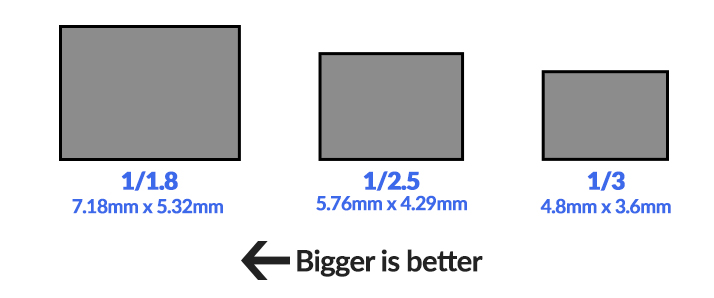
Smaller sensors are one of the main shortcuts that camera manufacturers use to reduce a camera’s price, which comes at the cost of worse night vision. If you need to have outdoor security cameras with good night vision, try to get cameras with a 1/1.8″ sensor.
For a camera to be able to see at night, it needs a light source. This can be from something like a floodlight or a street light, or it emits its own Infrared (IR) beam.
An important feature for any outdoor security camera’s night vision is something called “Smart IR”. Smart IR is a technology that adjusts the Infrared’s intensity depending on how close the target is.
For example, your camera might be trying to extend its IR light as far as it can so you can see up to 100 feet. However, if the target is within 3 feet, the light will be far too bright, resulting in the close subject being white outline.
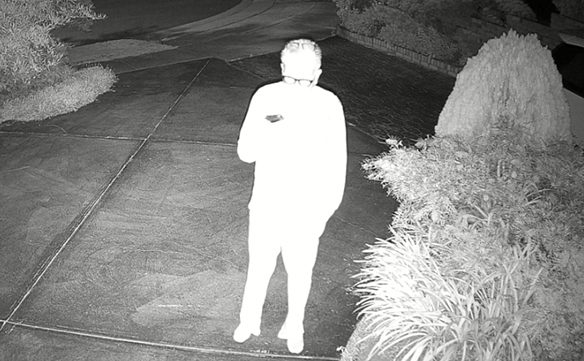
Infrared Washout caused by an outdoor security camera without Smart IR
Security cameras with Smart IR will turn down the Infrared light to the appropriate level.
Consumer-grade cameras such as Ring and Arlo tend to perform poorly at night as they have small sensors and don’t have Smart IR.
5
What is the difference between Indoor and Outdoor Surveillance Cameras?
The difference between an indoor and an outdoor surveillance camera is its IP rating and IK Rating.
IP in this context stands for “Ingress Protection”, which means protection from something getting inside the camera, whether that is a person, water or dust. IP Rating is not to be confused with “IP Cameras”, which means it is a camera connected via a computer network.
IK Rating means “Impact Protection.” The K comes from the word “Kinetic”, which relates to motion. They use the K to differ from the above IP Rating. In short, the IK rating determines how much of a whack the camera can survive.
Indoor cameras usually have no IP or IK rating. Outdoor cameras have different IP and IK ratings depending on the weather conditions and likelihood of vandalism.
When you look at the camera specifications, you will see something like “IP67 Protection”.
- The first number is its protection from solid objects. In this case, “6” means it is dust-tight. No dust can get in.
- The second number is its protection from liquids. “7” means that the camera is protected from the effects of immersion in water between 5cm and 1m for 30 minutes. You are obviously unlikely to dunk your outdoor security cameras underwater, but it means it will do well in rain and storms.
6
Outdoor Security Cameras FAQ:
Are wired or wireless outdoor security cameras better?
Unless your location is a rental where you cannot install wires, wired security cameras are almost always better. They are more reliable and less prone to wireless interference and hacking.
How do I power outdoor security cameras?
The three most common ways are Power-Over-Ethernet (POE) where the power and network data comes down the same network cable. This requires either a POE enabled switch or a POE injector. Another way is getting a camera that uses a battery that you remove and recharge occasionally. The third way is a camera that makes use of a battery and a solar panel.
What should I look for when buying an outdoor security camera?
Look at how you are going to power the camera. Its IP (Ingress Protection) rating to see how well it can resist dust and water getting into it. Also, look at its IR (Infrared) distance which determines how far it can see at night.
Do all outdoor security cameras have infrared / nightvision?
Most outdoor cameras have a near range infrared (IR) emitter allowing them to see at night. The IR range for most generic security cameras is about 30 ft. More specialised security cameras can achieve up to 150ft IR range. However, keep in mind that the IR range is only one part of the puzzle, the cameras optics will also need to be able to see 150ft to make use of that 150ft IR range.